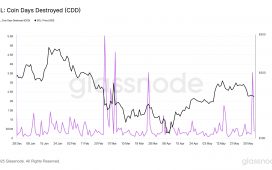The cost of cleaning up Sellafield is expected to spiral to £136bn and Europe’s biggest nuclear waste dump cannot show how it offers taxpayers value for money, the public spending watchdog has said.
Projects to fix buildings containing hazardous and radioactive material at the state-owned site on the Cumbrian coast are running years late and over budget. Sellafield’s spending is so vast – with costs of more than £2.7bn a year – that it is causing tension with the Treasury, the report from the National Audit Office (NAO) suggests.
Officials from finance ministry told the NAO it was “not always clear” how Sellafield made decisions, the report reveals. Criticisms of its costs and processes come as the chancellor, Rachel Reeves, prepares to plug a hole of about £40bn in her maiden budget.
Europe’s most hazardous industrial site has previously been described by a former UK secretary of state as a “bottomless pit of hell, money and despair”. The Guardian’s Nuclear Leaks investigation in late 2023 revealed a string of cybersecurity problems at the site, as well as issues with its safety and workplace culture.
The NAO found that Sellafield was making slower-than-hoped progress on making the site safe and that three of its most hazardous storage sites pose an “intolerable risk”.
The site is a sprawling collection of buildings, many never designed to hold nuclear waste long-term, now in various states of disrepair. It stores and treats decades of nuclear waste from atomic power generation and weapons programmes, has taken waste from countries including Italy and Sweden, and is the world’s largest store of plutonium.
Sellafield is forecast to cost £136bn to decommission, which is £21.4bn or 18.8% higher than was forecast in 2019. Its buildings are expected to be finally torn down by 2125 and its nuclear waste buried deep underground at an undecided English location.
The underground project’s completion date has been delayed from 2040 to the 2050s at the earliest, meaning Sellafield will need to build more stores and manage waste for longer. Each decade of delay costs Sellafield between £500m and £760m, the NAO said. Meanwhile, the government hopes to ramp up nuclear power generation, which will create more waste.
Sellafield is owned by the Nuclear Decommissioning Authority (NDA), a taxpayer-owned and -funded quango. The NDA believes the cost of decommissioning Sellafield could range from £116bn to £253bn, depending on the length and complexity of the cleanup.
Plans to clean up three of its worst ponds – which contain hazardous nuclear sludge that must be painstakingly removed – are running six to 13 years later than forecast when the NAO last drew up a report, in 2018. The NAO said deteriorating buildings, Covid restrictions, staffing and equipment breaking down were to blame. Sellafield had “retrieved much less waste than it had planned” since 2020, it said.
Sellafield could spend more on demolishing buildings earlier to be more efficient and offer better value for money, the NAO said.
One pond, the Magnox swarf storage silo, is leaking 2,100 litres of contaminated water each day, the NAO found. The pond was due to be emptied by 2046 but this has slipped to 2059. The Guardian investigation revealed it could continue leaking until 2050.
The NAO said: “Sellafield has demonstrated that it can remove safely the most hazardous waste, but is not progressing quickly enough to meet its plans.”
Last year, Sellafield defied the Treasury and without consultation increased its headcount from 11,200 to 12,000, despite previous commitments to reduce its employee numbers by becoming more efficient, the report said.
In one blunder, Sellafield paid out £2.1m more in staff bonuses than it should have done – about £200 a person – in 2023. This was paid after a management decision that the NAO suggests was questionable.
Sellafield had expected to replace a testing facility that is more than 70 years old and in “extremely poor condition”, but after racking up £265m over more than seven years the project is under review amid concerns over delays and the condition of buildings on the site. The NAO said this was the single biggest risk to Sellafield’s future, as workers needed to carry out many different regular scientific tests.
Gareth Davies, the head of the NAO, said: “Despite progress achieved since the NAO last reported, I cannot conclude Sellafield is achieving value for money yet, as large projects are being delivered later than planned and at higher cost, alongside slower progress in reducing multiple risks.”
He added: “Continued underperformance will mean the cost of decommissioning will increase considerably, and ‘intolerable risks’ will persist for longer.”
This month, Sellafield was fined £332,500 for cybersecurity failings and the chief magistrate in the case, Paul Goldspring, said it fell into a category “bordering on negligence”.
The NAO said the nuclear site had again admitted that its cybersecurity efforts were falling short.
David Peattie, the NDA’s chief executive, said: “Sellafield is one of the most complex environmental programmes in the world. We’re proud of our workforce and achievements being made, including the unprecedented retrieval of legacy waste from all four highest hazard facilities.
“But as the NAO rightly points out there is still more to be done. This includes better demonstrating we are delivering value for money and the wider significant societal and economic benefits through jobs, the supply chain and community investments.”










